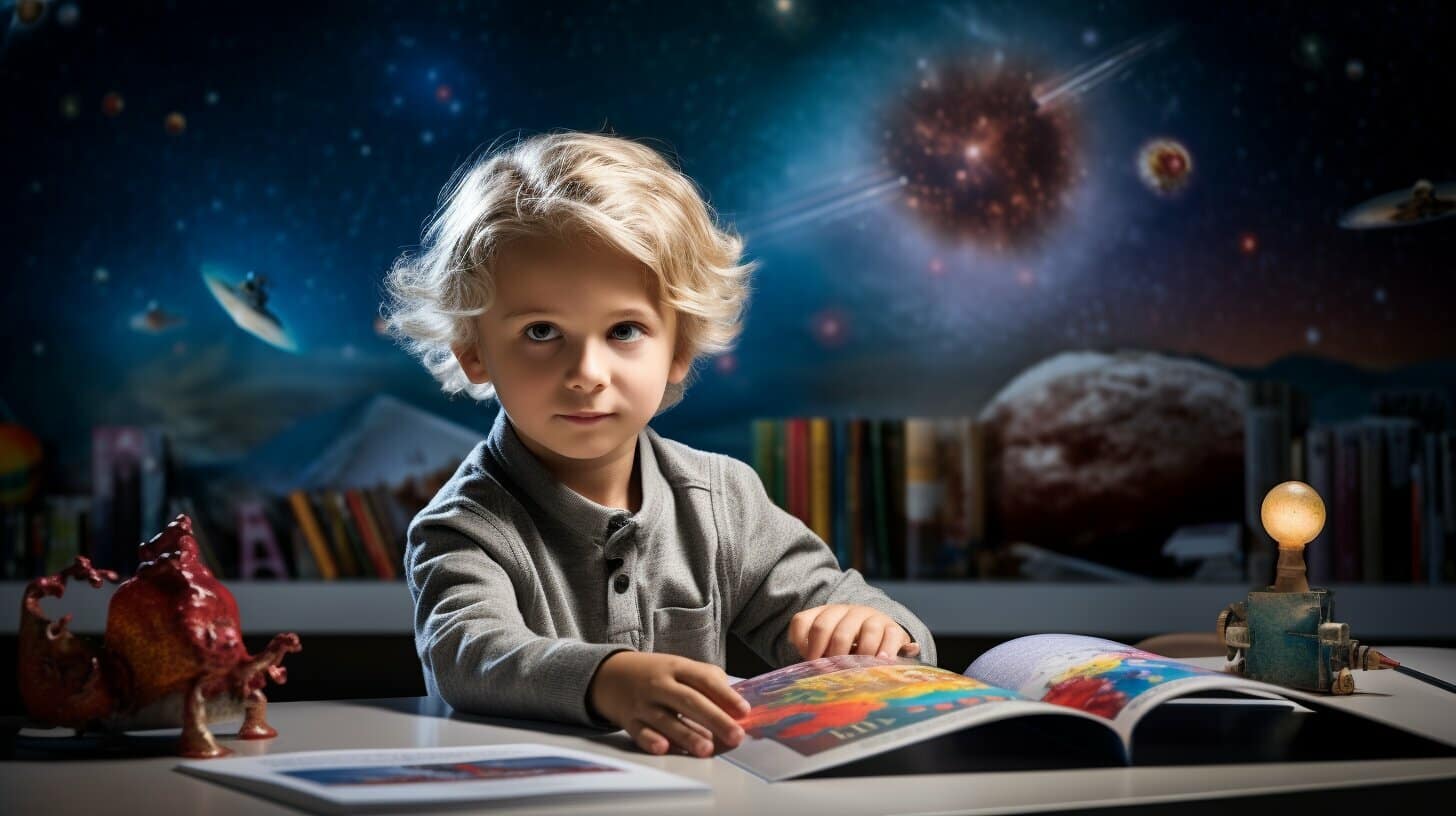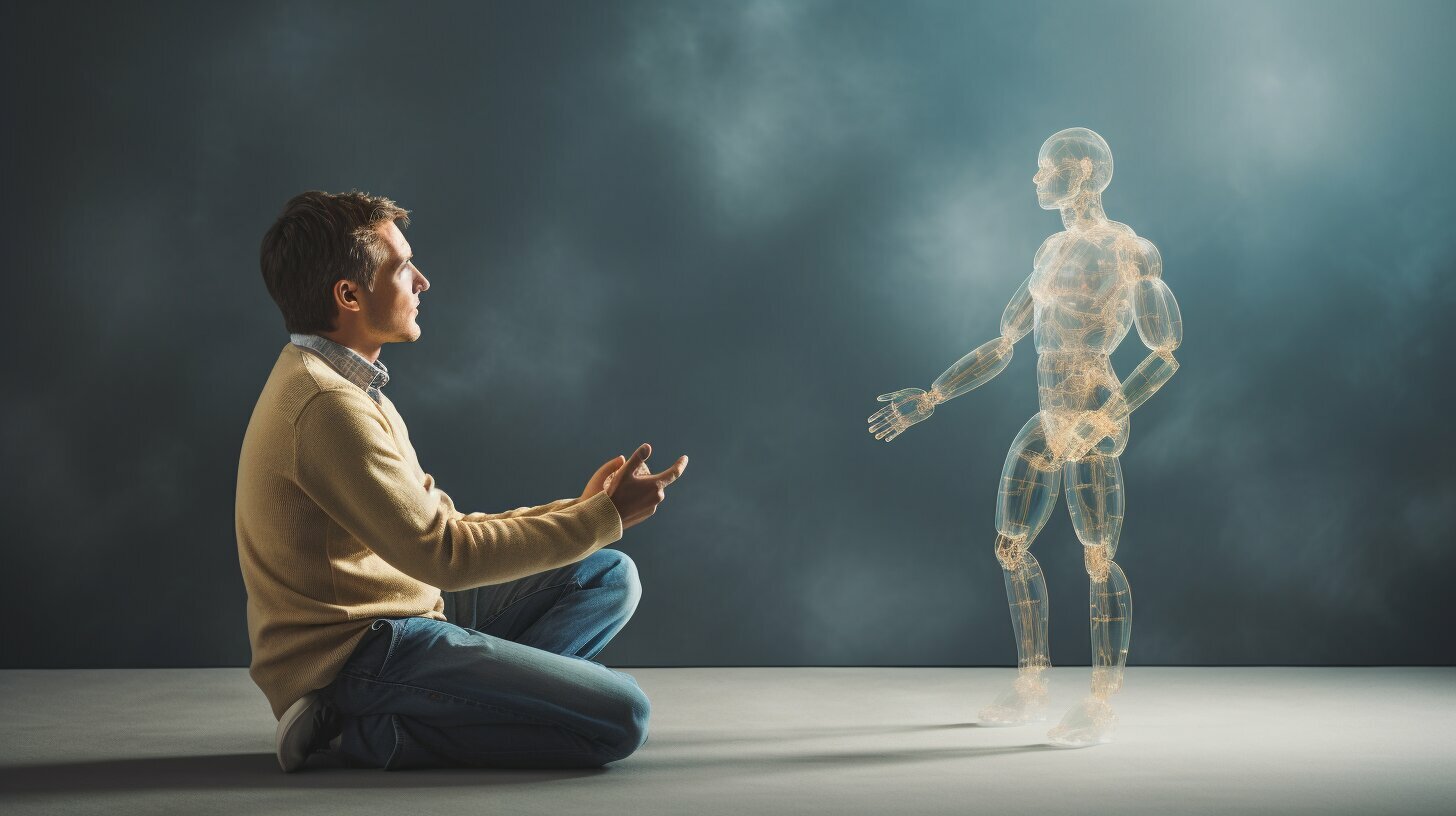Explaining complex scientific concepts to a child can be a daunting task, especially when it comes to the brilliant mind of Albert Einstein. However, with the right approach and a bit of creativity, you can engage their curiosity and introduce them to the fascinating world of Einstein’s genius.
In this article, we’ll provide you with fun and simple methods to teach children about Einstein’s theories. From breaking down the theory of relativity to exploring his ideas through hands-on activities, we’ve got you covered.
Key Takeaways:
- Teaching children about Einstein can inspire curiosity and a passion for learning.
- Provide age-appropriate explanations of Einstein’s background and achievements.
- Use analogies and practical demonstrations to explain his theories in simple terms.
- Engage children’s curiosity through fun and educational activities.
- Communicate Einstein’s ideas effectively using age-appropriate language and visual aids.
- Address common misconceptions and encourage children to explore their own potential in science.
Why Teach Children About Einstein?
Explaining Einstein to kids may seem like a daunting task, but it can be a fun and rewarding experience. Learning about Einstein’s contributions to science can inspire children to think critically, ask questions, and explore their world with curiosity.
Studying Einstein’s theories can also help children develop valuable academic skills, such as problem-solving, logical reasoning, and scientific inquiry. As they learn about relativity, space-time, and other complex concepts, children can improve their mathematical and analytical abilities.
Moreover, teaching children about Einstein can foster a love of learning and an appreciation for intellectual pursuits. When kids see how Einstein’s curiosity and perseverance led to groundbreaking discoveries, they may be inspired to pursue their own interests and passions.

Overall, introducing children to Einstein’s legacy can be a powerful way to encourage their intellectual and personal growth. Whether you’re a parent or an educator, there are many fun and simple methods to help kids understand and appreciate Einstein’s genius.
Introducing Einstein: Who Was He?
If you want to explain Einstein to a child, it’s important to start with the basics. So, who was Einstein? Simply put, Einstein was one of the most brilliant scientists of all time. He’s most famous for his theory of relativity, but he made many other important contributions to science as well.
Einstein was born in Germany in 1879. As a child, he was very curious and loved to learn. He was especially interested in math and science. When he grew up, he became a physicist, which is a scientist who studies the laws of the universe. Einstein’s work fundamentally changed the way we think about space, time, and the nature of the universe.
Fun fact: Einstein was also a talented violinist and loved playing music in his free time!
| Einstein’s Achievements | |
|---|---|
| Special Theory of Relativity | Explained how time and space are related and how gravity works |
| General Theory of Relativity | Expanded on the Special Theory of Relativity and explained how gravity affects the shape of space-time |
| Mass-Energy Equivalence (E=mc2) | Explained the relationship between mass and energy, which led to new discoveries in atomic physics |
Even though Einstein’s work was groundbreaking, it’s important to remember that he was just a person like you and me. He had to go to school, eat breakfast, and do his chores, just like any other kid. But he had a passion for learning and exploring the world around him that led him to become one of the greatest thinkers in history.
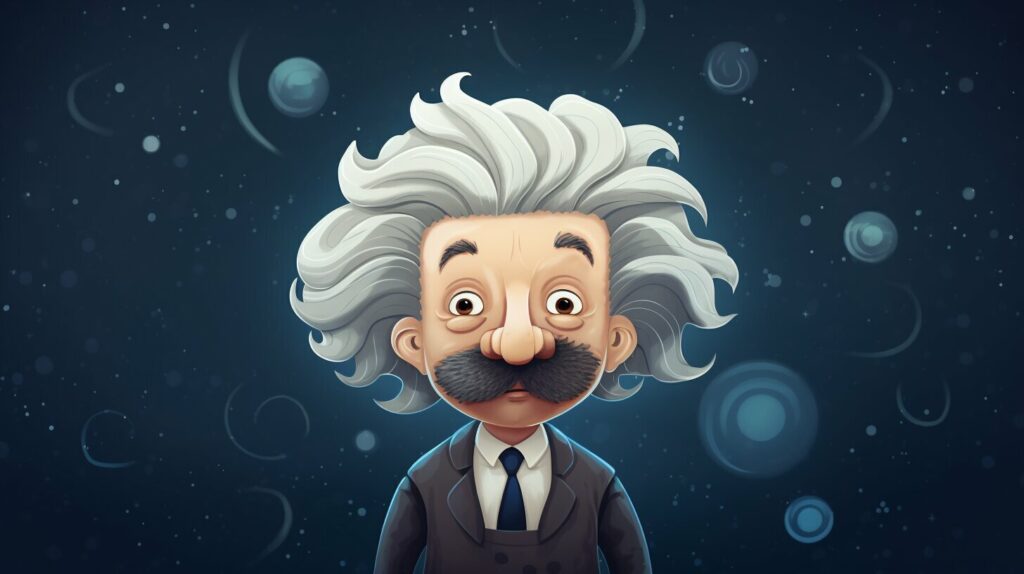
Einstein’s Theory of Relativity Made Easy
Albert Einstein’s theory of relativity is one of the most famous and influential theories in modern physics. While it may seem like a difficult subject to teach to a child, with the right approach, it is possible to break it down into simple terms that they can understand.
At its core, Einstein’s theory of relativity is all about space, time, and gravity. According to Einstein, these three things are not separate entities, but rather, they are interconnected and affect each other in ways that can be difficult to comprehend.
One way to explain the theory of relativity to a child is to use an analogy involving a trampoline. Imagine that the trampoline is a stretchy, elastic sheet representing space-time. If you place a heavy ball, representing a planet, in the center of the trampoline, it will create a depression or “dimple” in the sheet. This represents gravity.
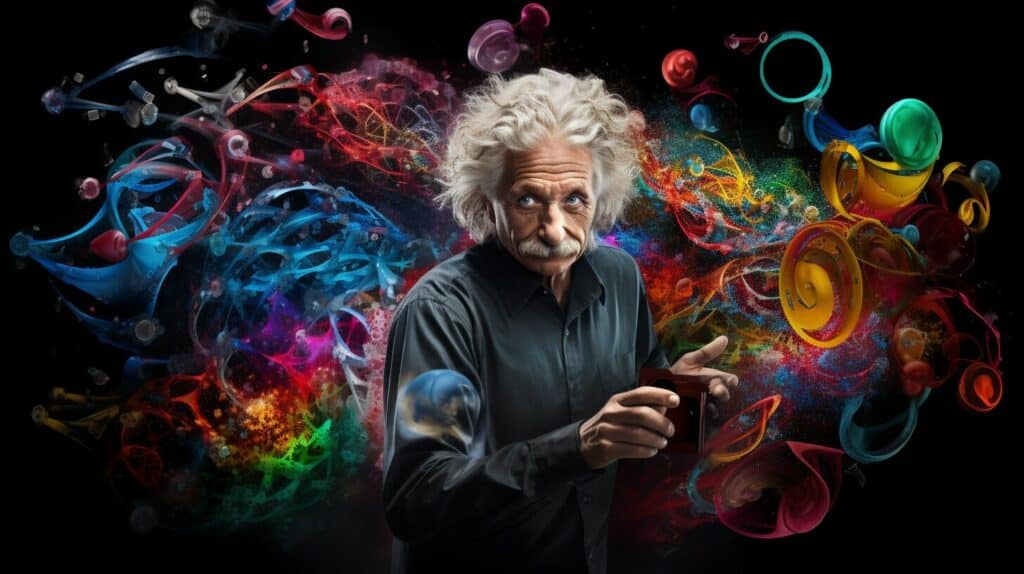
Now, imagine rolling a smaller ball, representing a smaller object like a satellite, across the surface of the trampoline. The smaller ball will roll towards the larger ball, drawn by the “dimple” in the sheet created by the heavier object. This is similar to how gravity works in space-time, where larger objects like planets create a “dimple” in space-time that attracts smaller objects towards them.
Another important concept in Einstein’s theory is the speed of light. According to Einstein, the speed of light is constant, no matter who observes it or how fast they are moving. This means that time and space can be warped or distorted by things like gravity or motion, which can affect how we perceive the world around us.
One way to illustrate this concept is to use a thought experiment involving twins. Imagine two twins, one of whom stays on Earth while the other travels through space at close to the speed of light. When the traveling twin returns to Earth, they will have aged less than the twin who stayed on Earth, due to the effects of time dilation caused by their high speed.
Overall, while Einstein’s theory of relativity may seem complex, with the right analogies and examples, it can be explained in a way that is easy for children to understand. By breaking it down into simple terms, you can help foster their curiosity and inspire them to learn more about the wonders of science.
Understanding Einstein’s Concepts: A Step-by-Step Approach
Teaching children about Einstein’s theories may seem daunting, but breaking down his concepts into simple terms can make it easy for them to understand. Here’s a step-by-step approach to help your child understand Einstein’s ideas:
- Start with the familiar: Begin by introducing your child to everyday concepts like time, space, and gravity. Encourage them to ask questions and explore their understanding of these concepts.
- Introduce new concepts: Gradually introduce more complex ideas like space-time and the speed of light. Use analogies and examples to help them relate to these abstract ideas. For example, you could explain space-time by using a trampoline to demonstrate how mass warps the fabric of space-time.
- Practical experiments: Offer practical experiments or demonstrations to help your child explore Einstein’s concepts in a hands-on manner. For example, you could set up an experiment to demonstrate the effects of gravity on a pendulum.
Remember to use age-appropriate language and allow your child to ask questions, as this will help reinforce their understanding and keep them engaged. By breaking down Einstein’s concepts into simple terms, you can make learning about science fun and accessible for children.

Exploring Einstein’s Ideas through Fun Activities
If you want to make learning about Einstein’s concepts more engaging for your child, try incorporating fun activities into your teaching methods. By doing so, you can provide a hands-on approach to learning that will encourage your child’s curiosity and make the topic more relatable.
One activity you can try is building a model of a black hole. Using a large piece of paper or cardboard, create a funnel shape and cover it with black construction paper. Have your child color and cut out small stars to place around the black hole, demonstrating the effect that gravity has on space.
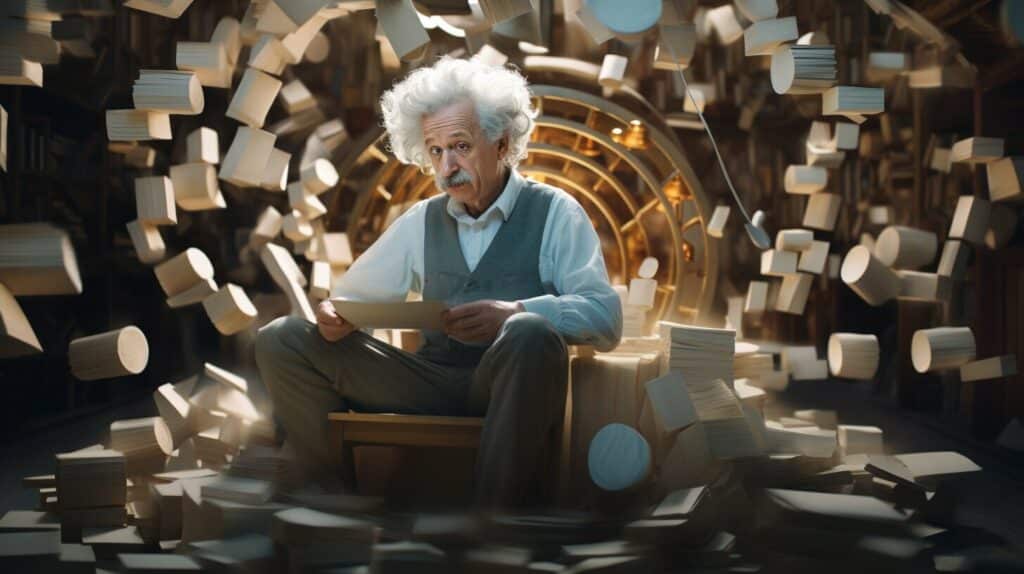
Another activity that can help your child understand Einstein’s theories is creating a time machine. Using a cardboard box and some paint, have your child decorate the box to look like a time machine. Then, use a toy car or other object to demonstrate how traveling at the speed of light can alter time and space.
For a more interactive approach, try playing a game of “Einstein Says.” This game is similar to “Simon Says,” but instead of following commands from “Simon,” your child will follow commands from “Einstein.” Commands can include acting out the effects of gravity or pretending to move at the speed of light.
Overall, incorporating fun and educational activities into your teaching methods can help your child better understand Einstein’s concepts and foster a love of learning. By engaging their curiosity and providing hands-on experiences, you can help inspire the next generation of scientists and inventors.
Communicating Einstein to Young Learners
Communicating Einstein’s ideas to young learners can be challenging, but it’s not impossible. Here are some tips to help:
- Use age-appropriate language: Avoid using complex or technical terms that might confuse children. Instead, use simple words and examples that they can relate to. For example, instead of talking about the speed of light in vacuum, you can explain it as the speed at which light travels that makes everything around us visible.
- Visual aids: Use visual aids, such as pictures, diagrams, and videos, to help children understand abstract concepts. For instance, you can use a see-saw game to explain the concept of balance and how this principle can be used to understand gravity.
- Interactive discussions: Encourage children to ask questions and share their thoughts. You can ask open-ended questions and challenge them to think critically about the concepts being discussed. Suppose you’re talking about Einstein’s theory of relativity, and a child asks why time is relative. In that case, you can encourage them to think about different situations and how time might be perceived differently in each of them.
Remember that children have a natural curiosity and eagerness to learn. By using fun and interactive approaches to teaching Einstein’s ideas, you can keep them engaged and interested in science.
Check out the below picture to see how teaching Einstein’s concepts can be simplified and fun.
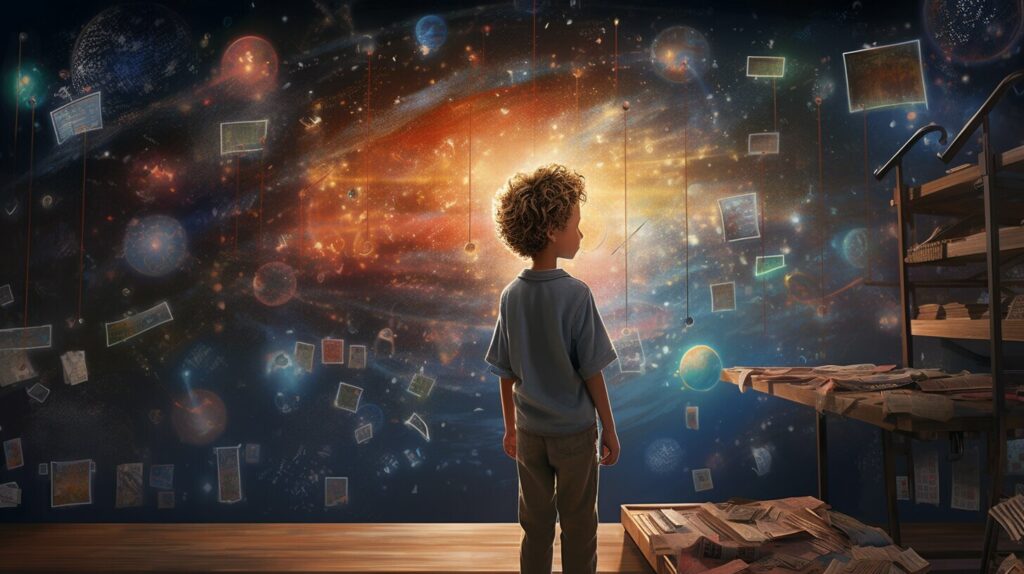
Breaking Down Einstein’s Theories for Kids: Common Misconceptions
When teaching children about Einstein’s theories, there are common misconceptions that can arise. One such misconception is that Einstein’s theories only apply to space and the universe, and not to everyday life. However, this is not true. Einstein’s theories also have practical applications in our lives, such as GPS technology.
Another misconception is that Einstein’s theories are too complex for children to understand. While some aspects may be challenging, with the right explanations and examples, children can grasp the basics of his theories.
Finally, some children may believe that Einstein was simply born a genius, without any hard work or effort. However, this is not the case. Einstein himself once said, “It’s not that I’m so smart, it’s just that I stay with problems longer.” It’s important to emphasize to children that Einstein’s success was not solely due to his intelligence, but also his curiosity, determination, and perseverance.
By addressing these common misconceptions, you can help children better understand and appreciate Einstein’s theories and legacy. Remember to present the information in a simple and engaging manner, using relatable examples and practical applications.
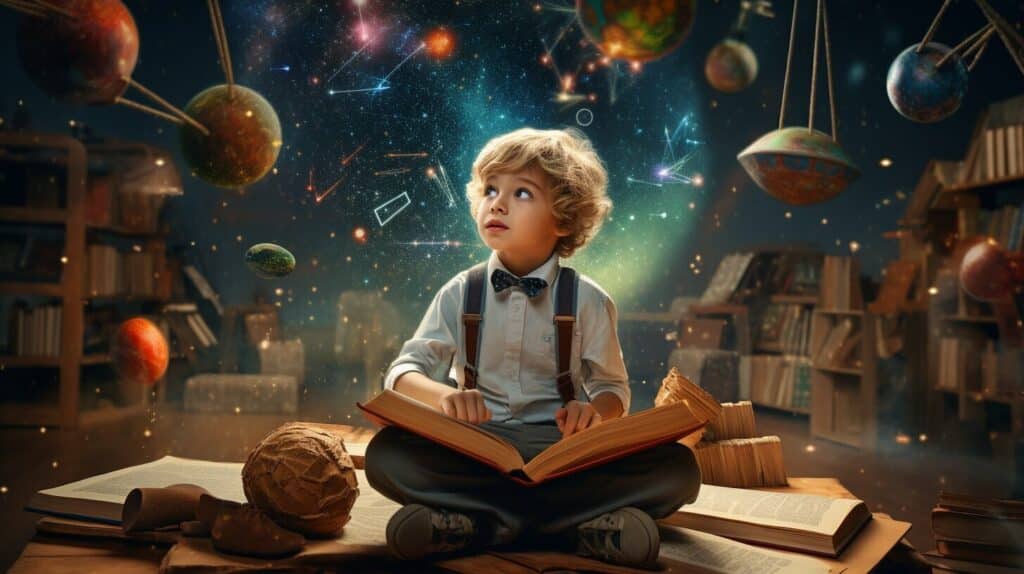
Encouraging Young Minds: Inspiring the Next Einstein
Introducing Einstein to young minds can be a powerful way to inspire them to pursue science and explore their own potential. Einstein’s legacy continues to inspire countless inventors and scientists today, and by teaching children about his incredible achievements, we can help ignite their curiosity.
Consider sharing stories of young inventors or scientists who were inspired by Einstein’s legacy. For example, Jack Andraka, who discovered a revolutionary new method for detecting pancreatic cancer at the age of 15, was inspired by Einstein’s work on light and energy. Such stories can help children appreciate the impact that scientific breakthroughs can have on society.
You can also encourage young minds to explore scientific concepts through hands-on experiments, puzzles, or interactive games that allow them to apply Einstein’s concepts in a fun and engaging way. These activities not only reinforce their knowledge but also help develop their critical thinking and problem-solving skills.
Remember to foster a supportive and encouraging environment that promotes curiosity and exploration. By providing opportunities for young learners to experiment, ask questions, and explore their interests, we can help inspire the next generation of scientists and inventors.

Conclusion
Explaining Einstein to a child doesn’t have to be an intimidating task. By engaging their curiosity and using fun and simple methods, you can teach children about this genius scientist in a way that’s relatable and exciting.
Remember, teaching children about Einstein isn’t just about learning science; it’s about inspiring a love for learning and fostering critical thinking skills. By introducing Einstein’s ideas and achievements, you can help children explore their own potential and inspire them to pursue science and innovation.
So, don’t be afraid to dive into Einstein’s theories and concepts with your children! Use the tips and strategies outlined in this article to help you explain Einstein to a child – and who knows, you might just spark the curiosity of the next great inventor or scientist.
Can the Same Fun and Easy Approach Be Used to Explain Einstein to a Child?
Explaining the complex concept of Einstein’s theories to a child can be challenging, but adopting a fun approach to explaining radioactivity might help. By breaking down intricate ideas into simpler terms and incorporating engaging visuals or interactive demonstrations, children can grasp the fundamental concepts in an entertaining and accessible way. Using relatable examples and storytelling techniques can further enhance their understanding and spark curiosity about Einstein’s groundbreaking discoveries.
FAQ
Q: How can I explain Einstein to a child?
A: Explaining Einstein to a child can be done through fun and simple methods. Using age-appropriate language and examples, you can introduce who Einstein was, his background, and his achievements. Breaking down complex concepts like Einstein’s theory of relativity into simple terms with analogies and demonstrations can help children understand his ideas.
Q: Why is it important to teach children about Einstein?
A: Teaching children about Einstein is important because it can inspire curiosity, critical thinking, and a passion for learning. Learning about his contributions to science can open young minds to new possibilities and encourage them to explore their own potential.
Q: How can I help children understand Einstein’s concepts?
A: Understanding Einstein’s concepts can be approached step-by-step. Starting with familiar concepts and gradually introducing more complex ideas can make it easier for children to grasp. Practical experiments or demonstrations can also engage their curiosity and help solidify their understanding.
Q: What are some fun activities to explore Einstein’s ideas?
A: Exploring Einstein’s ideas can be made fun with activities like experiments, puzzles, or interactive games. These activities allow children to apply Einstein’s concepts in a hands-on manner, further reinforcing their understanding.
Q: How do I communicate Einstein’s ideas to young learners?
A: Effectively communicating Einstein’s ideas to young learners involves using age-appropriate language, visual aids, and interactive discussions. These methods help keep children engaged and interested in learning about Einstein.
Q: What are some common misconceptions about Einstein’s theories?
A: Children may have common misconceptions or misunderstandings when learning about Einstein’s theories. Addressing these misconceptions and providing simple explanations can help children grasp the correct concepts.
Q: How can introducing Einstein inspire young minds?
A: Introducing Einstein to young minds can inspire them to pursue science and explore their own potential. Sharing stories of young inventors or scientists who were inspired by Einstein’s legacy can further encourage children to follow their curiosity.

